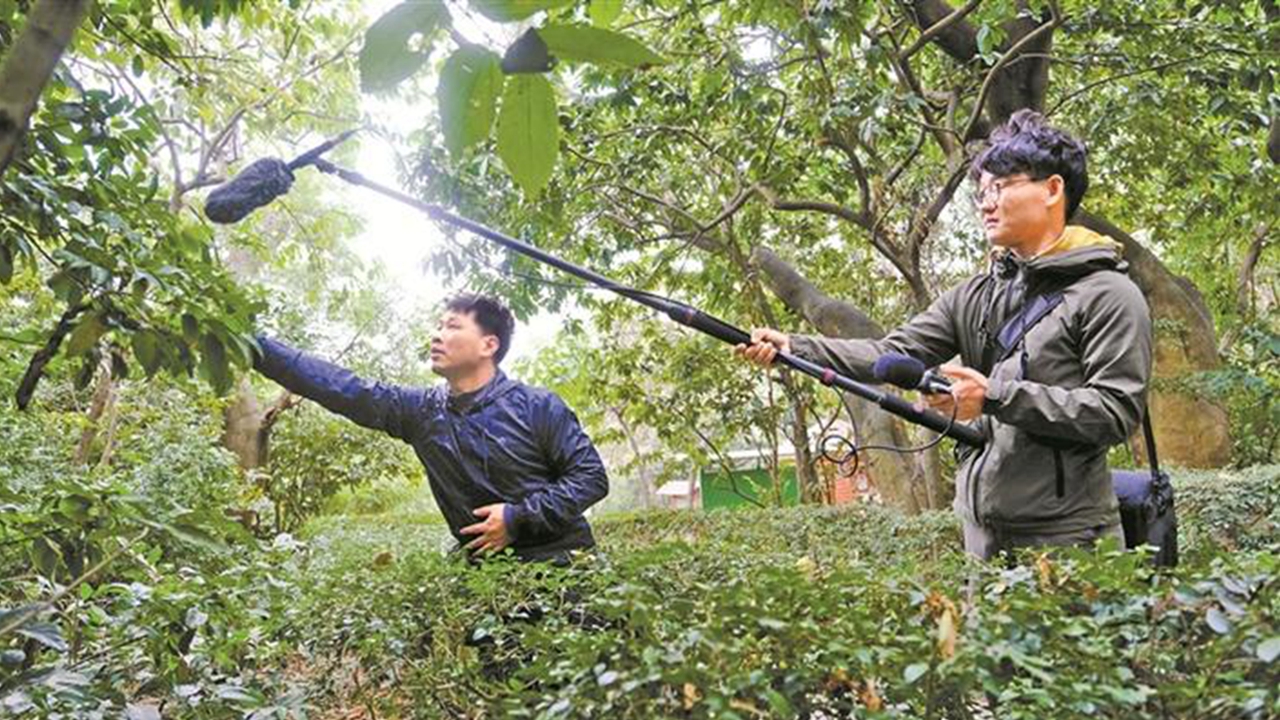Documentary on SZ's biodiversity aired on CCTV
Writer: Wang Jingli | Editor: Zhang Chanwen | From: Shenzhen Daily | Updated: 2022-09-15
A+ A- Print
A nature documentary called “Wild City,” which spotlights Shenzhen’s biodiversity, is airing on China Central Television Documentary Channel (CCTV-9) from Tuesday until tonight.

Two members of the creative team for “Wild City” film a scene in Shenzhen. The nature documentary is on air on China Central Television Documentary Channel (CCTV-9) from Tuesday until tonight. Courtesy of “funsomestudio” WeChat account
The documentary has three episodes in total, featuring wildlife in Shenzhen Bay, Neilingding Island and Maluan Mountain Country Park.
“We are hoping to lead the public to get closer to nature, to learn about our homeland and to recognize its beauty. This is our original goal five years ago,” Guo Qian, producer of the documentary, told Shenzhen Special Zone Daily in an interview Tuesday.
The documentary’s creative team started observing Shenzhen’s natural ecology in 2015 and saw many diverse habitats and rich species. After seeing the beauty of the city’s natural environment, they also want to capture it through their cameras.
“Shooting a nature documentary was a challenge for the team. This challenge comes from changes. The subjects are free, wild and energetic, and of course do not heed to human arrangements. People must respect, carefully observe and record them,” said Yi Jin and Qu Yun, directors of the episode featuring Maluan Mountain Country Park in Pingshan District.
Zhang Ruijiao and Luo Yaqin, directors of the Shenzhen Bay episode, shared a similar feeling. They were responsible for shooting migratory birds spending winter in Shenzhen Bay. As photographers as well as directors, they have to capture details that can be developed into stories among the birds’ most repeated behaviors and actions.
For example, egrets, which are commonly seen in Shenzhen, were quite easy to shoot while they are playing and foraging daily. However, one day, the team spotted an egret with broken legs. How does the injured bird hunt for food and would it be attacked by its peers? The team curiously took their cameras out to seek answers to this question.
Zhang and Luo said whenever they heard citizens asking whether a fish unknown to them is delicious to eat, they felt a strong sense of responsibility. They hoped the documentary will guide the public to learn about nature and to protect biodiversity.
The most thrilling scene was a duel between a centipede and a many-banded krait (bungarus multicinctus) during the Neilingding Island episode shoot. The many-banded krait, the fourth most venomous snake, was surprisingly eaten by the centipede.
During the shoot, director Yin Xiuming and his crew used a macro lens for extreme close-up images. Unexpectedly, the centipede turned to the camera, scaring the photographer who then dropped his equipment.
Yi and Qu’s team captured Hong Kong newts in the country park episode. Why would the species appear in Shenzhen? What would they look like? How do they mate and spawn? The crew must have a wealth of knowledge before they start shooting so that they can identify the animals’ species, habitats and characteristics properly when encounter them in the wild.
According to Yi and Qu, their biggest surprise in shooting the documentary was seeing more and more disappearing species return to nature in Shenzhen.